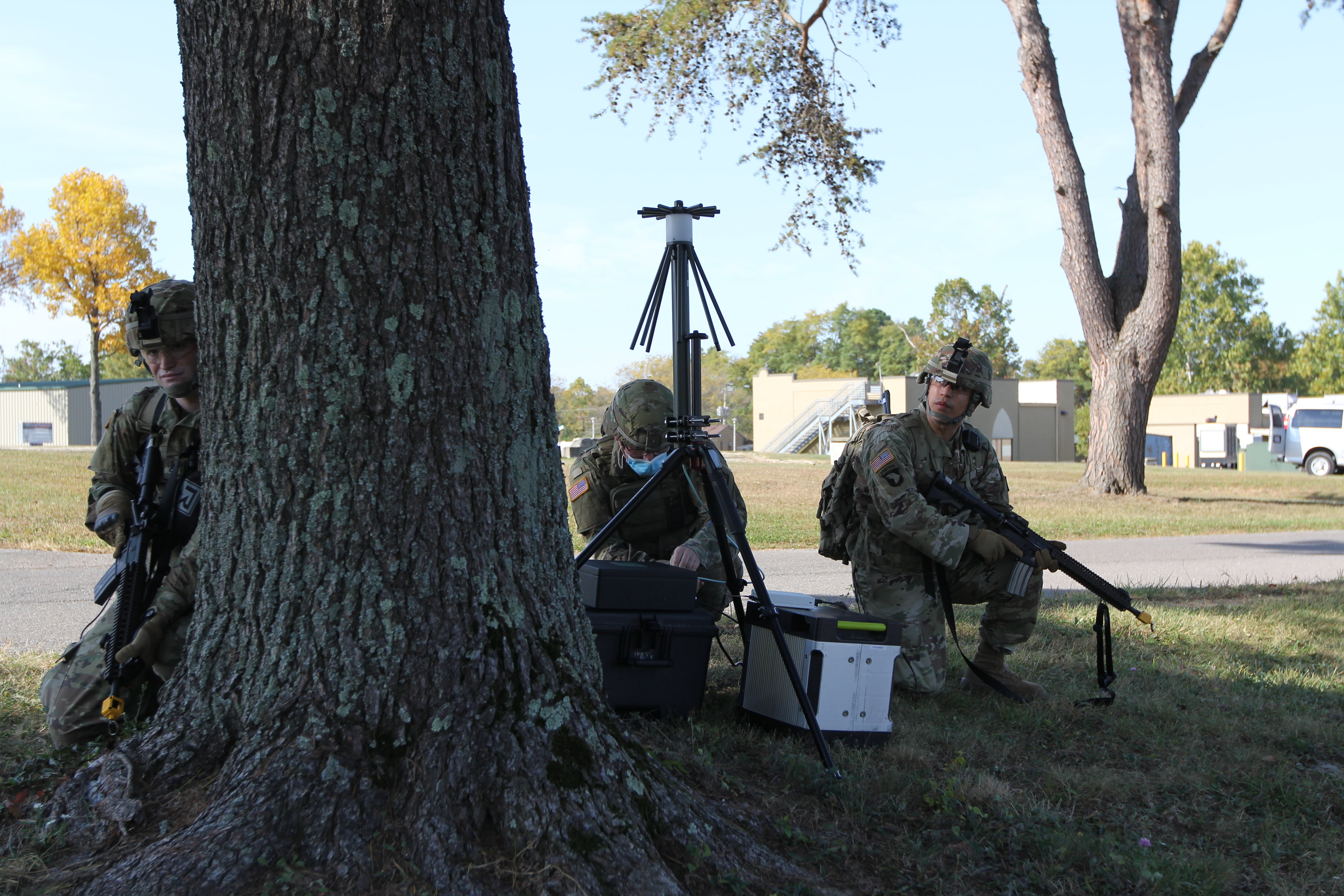WASHINGTON — The Army is still experimenting with the right command-and-control mechanisms for information advantage capabilities across various echelons and regions, a service official said this week.
“The command and control of information advantage activities is something that quite honestly we’re going to have to learn through doing,” Brig. Gen. Paul Stanton, commander of the Army Cyber Center of Excellence, told C4ISRNET at the annual Association of the U.S. Army conference in an Oct. 13 interview.
The service is in the midst of developing its doctrine for what it calls information advantage, meant to help commanders make better informed and quicker decisions that give them a leg up.
The Army has conducted several experiments and has several more on the horizon to determine how tactical commanders should employ non-kinetic capabilities like cyber, electronic warfare or information operations locally or how to ask for assistance from higher echelons to include the more strategic cyber teams from U.S. Cyber Command.
The Army wants to decide which units will perform certain activities and how they will tie into higher headquarters.
“Where do we put those units of action, where do we put the command and control and how do we nest that command and control within our regional and aligned combatant commands? We don’t know the answer to that, which is why we’re experimenting,” Stanton said.
He previously said the Army is experimenting with two models, giving these responsibilities to a staff section and to a command.
The service is also considering creating a special staff section within each echelon focused on information capabilities, dubbed a G-39.
“We’re looking at an option of the G-39 being a command-and-control element nested within the [operations staff section], nested within the command,” Stanton said, noting the Army has to take into consideration the roles, responsibilities and authorities of all the organizations.
“What you’re allowed to do for military deception operations is very different from what you’re allowed to do from public affairs messaging is very different from what you do in terms of achieving a strategic cyber effect,” he said. “Putting all those pieces together is the future command-and-control model that we have to experiment and learn.”
On the cyber front, the Army is “putting our toe into new waters” when it comes to employing tactical cyber effects, mostly through the radio frequency spectrum, Stanton said.
He noted the Army must consider the target audiences for information operations.
“How an individual country in the Indo-Pacific, what social media they use, what actual television, what literature they read, what matters to them is very different than if I pick a country in Europe,” Stanton said. “Being tied to the headquarters that has the responsibly for a theater, we’re going to have to do that.”
The conventional force, he added, is learning from its special operations and special forces partners in the Army.
“Another huge lesson from the SOF community is they’re forward,” Stanton said. “They have folks that are embedded, boots on the ground in lots of different locations where they understand who the influencers are. It’s one thing to deliver a message, it’s something different to deliver a message that’s actually going to have an impact and change behaviors.”
The Army is also looking to make better use of its public affairs personnel under the context of information advantage.
“A key player is public affairs. Public affairs tells the truth. Period. Full stop,” Stanton said. “But the truth is critically important and the timeliness of the truth is critically important.”
He said public affairs messaging can’t be reactionary, but rather needs to be thought out, delivered at the right time and supportive of a commander’s tempo.
Mark Pomerleau is a reporter for C4ISRNET, covering information warfare and cyberspace.








